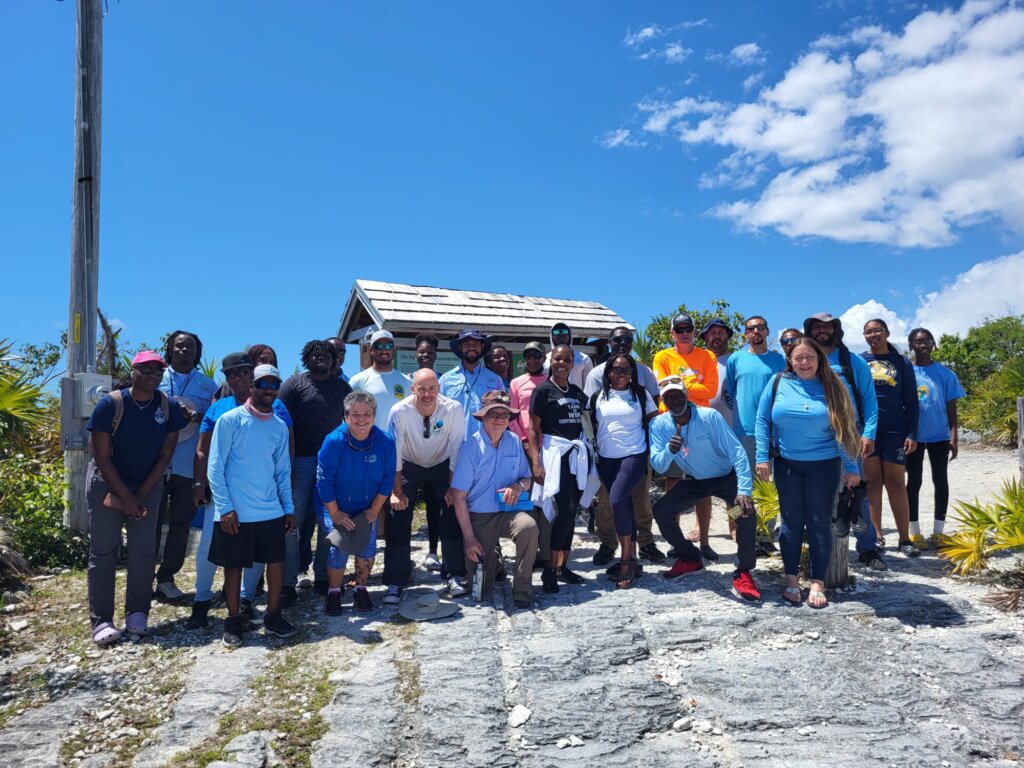
Restoring Hope: CBEMR’s Role in Post-Hurricane Recovery
Location: Bahamas
Timeline: April 2022
Goal: The workshop aimed to enhance participants’ skills and knowledge in mangrove management and restoration by combining theory, practical exercises, field visits, and stakeholder engagement to foster collaboration and strengthen restoration efforts in the Bahamas.
Partners
Extensive mangrove restoration work required following the devastation of Hurricane Dorian in 2019.
CBEMR training helped to kickstart mangrove recovery in Grand Bahama.
Participants were able to share lessons learned from previous restoration efforts in the area.
What we did
Mangroves play a crucial role in the Bahamas, protecting coastlines from erosion, acting as natural buffers against storms, and serving as vital habitats for marine species that support local fisheries and tourism. However, in 2019, Hurricane Dorian devastated Grand Bahama, destroying over 70% of the island’s mangrove forests. To support restoration efforts, Waterkeepers Bahamas, Earthcare Bahamas, and Mangrove Action Project conducted comprehensive training for local community associations, NGOs and funders, focusing on the Community-Based Ecological Mangrove Restoration (CBEMR) approach
The four-day workshop, held at the Rand Nature Centre on Grand Bahama and funded by the Bahamas Protected Areas Fund (BPAF), covered essential topics such as mangrove biology, biodiversity, structure, hydrology, and socio-economic considerations for restoration.
The 28 participants learned how to measure essential bio-physical parameters and set effective project objectives in collaboration with relevant stakeholders. A key highlight was a field trip to different mangrove sites, allowing attendees to examine areas that survived or were recovering from Hurricane Dorian, observe different mangrove features, and evaluate site suitability for restoration activities.
The workshop created a platform for sharing experiences, including successes, challenges, and lessons learned from local and international mangrove restoration efforts. Equipped with the insights and practical knowledge gained on this course, participants are now better prepared to refine their strategies and improve restoration outcomes across the region.








- Read more about Delivering mangrove restoration best practices in the Bahamas
Delivering mangrove restoration best practices in the Bahamas
Location: Bahamas Timeline: March - April 2023 Goal: To support local mangroves restoration efforts and implement best practices for future…

- Read more about Supporting Pacific Island mangrove restoration
Supporting Pacific Island mangrove restoration
Location: Virtual Timeline: January - February 2021 Goal: To partner with the US Forest Service to improve the mangrove restoration skills…

- Read more about Restoration Consultancy in East Kalimantan
Restoration Consultancy in East Kalimantan
Location: East Kalimantan Timeline: March 2018 Goal: To consult on 50ha of mangroves that had been enclosed and cleared in the…






